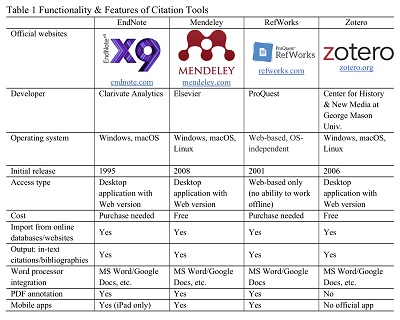 |
Plagiarism is a relatively long-studied area in college writing
research tracing back to the mid-1980s (Pecorari & Petrić,
2014). Within second language writing, plagiarism is a more complicated
and demanding issue in multilingual students’ laboring with English
(Pennycook, 2016). Bloch (2012) emphasizes the importance of
investigating how and when the second language writers’ use of
inappropriate textual borrowing happens, resulting in their loss of
voice. In teaching multilingual students source text use, I found the
use of citation tools very effective as a pedagogical approach to
prevent plagiarism because the students I have worked with often
mentioned a lack of knowledge or aid in their research process and the
frustrations they had with assignments. The students reported situations
when they were unable to complete assignments on their own or had no
idea how to do appropriate textual borrowings (Kim, 2017). In addition
to educating multilingual students about plagiarism, it’s important to
provide them with the necessary knowledge and tools to guide them away
from plagiarism in their writing.
Teaching students how to use citation management tools enables
them to approach their writing and research as a process. Citation tools
help student writers keep track of sources by gathering publication
information and creating reference lists in a chosen style with a single
click. In this article, I discuss the pros and cons of different
web-based reference tools and share tips on how to teach student writers
new ways to utilize them in their research process. This will ultimately
help teachers make an informed decision in choosing the right tool for
their classrooms and students.
Basics of Citation Tools
There are various citation tools available on the market (also
called reference managers or bibliographic management tools). The most
common examples include EndNote, Mendeley, RefWorks, and Zotero. These citation
managers help students organize, manage, and format citations for their
research. In detail, the tools all import bibliographic data from
various sources, including library catalogues, databases (ProQuest,
JSTOR, etc.), websites, or PDFs; add formatted citations into papers;
and create bibliographies in different styles, such as in the style of
the American Psychological Association (APA), the Modern Language
Association (MLA), and the Chicago Manual of Style (CMS) . They output
auto-formatted references as well as in-text citations. Students can
also organize citations using folders and topics while annotating such
citations or PDFs. They can eventually build their own research
collections.
Functionality of Citation Tools
Their official websites provide more detailed information on
each tool, and the citation tool comparison table (Table 1) highlights
their major features. For instance, EndNote was one of the first
citation managers available on the market. Mendeley is “a free reference
manager” with an additional “academic social network.” RefWorks is a
“web-based commercial” reference manager. Zotero is a “free, open-source
reference management software” available to everyone at no cost.
Table 1. Functionality and Features Table

Tips for Teaching the Tools
Among the four tools, EndNote and RefWorks are not free for
everyone, unlike Mendeley and Zotero, but many schools support their
affiliates by purchasing campus-wide subscriptions to the services. For
instance, schools such as Duke and NYU provide detailed information on
these citation tools through their libraries and support free access to
EndNote and RefWorks as part of their support for students and faculty
research. Thus, I suggest instructors and teachers check with their
school libraries about institutional support for these citation tools.
When first introducing these tools to students, I recommend
official tutorial videos on YouTube, which explain step-by-step how to
quickly navigate through the basic features of each tool. These free
training recordings are usually about 5 minutes long and very effective
in pinpointing basics for beginners. In a writing classroom, I advise to
first conduct an annotated bibliography assignment integrated with a
chosen citation tool to prepare for a longer, more complicated
research-based assignment that usually needs several sources. This
should eventually help student writers get accustomed to a chosen
citation tool and make it easier to simultaneously work with numerous
sources.
Which Tool to Choose?
These citation tools share similar features and functions, so
the best tool for your students depends on their needs and educational
contexts. For instance, besides RefWorks with web access only, other
tools’ access types are desktop application with basic or full web
versions for syncing and sharing sources. These desktop applications
also enable users to work offline. EndNote, Mendeley, and RefWorks have
mobile apps, such as EndNote’s iOS application for iPad users. They all
support different bibliographic styles, including the most commonly used
ones such as APA and MLA. They also support word processor integration,
which allows academic writers to sync sources while working on papers
with MS Word, Google Docs, and so on. This feature gives writers the
ability to cite while they write.
Endnote’s advanced features and custom options/preferences not
found in other tools may be complicated, making it not suitable for
beginners. Because of its web access only, RefWorks can be a good
choice when students want to work on multiple networks, while other
tools are a better choice when working with a few major computers or
laptops with the citation database stored locally. However, one caveat
is that teachers need to advise students to adhere to one citation tool
for the duration of a research paper or project, because frequent
exporting and importing is likely to add more mistakes or errors in
references, such as missing or incomplete citations.
Academic Writers and Citation Tools
For more serious academic writers, including graduate students,
I recommend Mendeley or RefWorks, supported by Elsevier and ProQuest,
respectively. These information and analytics companies are two of the
world’s major providers of scientific information, and they run numerous
academic journals in different fields. One of the graduate students I
worked with showed great satisfaction with Mendeley because many of the
journals where she published or wished to publish were run by Elsevier.
She noted different scientific journals now require different reference
formatting at submission, which is often different from APA or MLA. The
reference style used by each specific journal will be applied to the
manuscript with a single click when using a citation tool such as
Mendeley. Supported by their vast academic databases, the search
functions of Mendeley and RefWorks make it easy to find academic
sources, especially from reputable journals. By using keywords and
authors, students can search for related sources for their research.
Mendeley further gives students personalized suggestions for academic
articles based on their search history. Mendeley also has an interesting
feature called “Mendeley Stats,” which helps you assess your impact as a
researcher. It is useful for graduate students who want to become more
productive writers. They provide a detailed breakdown of your
publication information, including views, citations of your journal
article, and other related trends and data.
Quick Bibliography Tool
For a simple and quick bibliography, ZoteroBib can be a great
option as a reliable citation machine. Powered by the same technology
behind Zotero, ZoteroBib lets students instantly generate a
bibliography, regardless of device. It does not require creating an
account or installing any software or plugin. Numerous citation machines
are out there on the market, but many of them are limited with
countless errors. Compared with them, ZoteroBib is a free, easy to use,
precise tool. Students simply paste the URL (title, DOI, USBN, etc.) of
their source into the ZoteroBib search box and click “Cite” after
choosing a citation style. The manual editor also allows students to
enter the source data by hand, which I recommend for error-free
bibliographies. However, even with ZoteroBib, students should have
basic knowledge on their chosen style’s guidelines, which leads to fewer
errors.
Conclusion
The citation managers discussed here can do much of the work of
formatting references and creating citations for our student writers
with a single click. They give students the power to engage with and
manage their research data in a systematic manner. However, citation
styles supported by these tools do change periodically, and it may take
time for these changes to be updated in their systems. Therefore, I
advise you ask your students to double check their citations against
the chosen style and to use these citation tools responsibly.
References
Bloch, J. (2012). Plagiarism, intellectual property
and the teaching of L2 writing. Buffalo, NY: Multilingual
Matters.
Kim, M. (2017). Assessing multilingual students’ perceptions on
plagiarism: Recapturing their voices while avoiding plagiarism. Second Language Writing Symposium. Bangkok, Thailand.
Pecorari, D., & Petrić, B. (2014). Plagiarism in
second-language writing. Language Teaching, 47(3),
269–302. doi:10.1017/S0261444814000056
Pennycook, A. (2016). Reflecting on borrowed words. TESOL Quarterly, 50, 480–482.
doi.org/10.1002/tesq.294
Minsun Kim holds a PhD in English from Purdue
University. She has taught second language writing in English for more
than 10 years at Purdue and Miami University, Ohio. Her research
interests include second language writing with a focus on multilingual
and multicultural contexts. |

